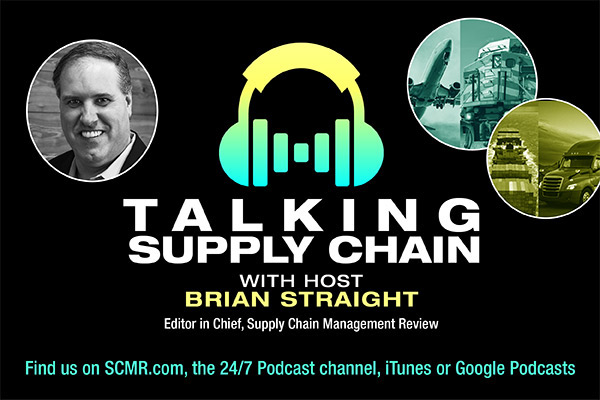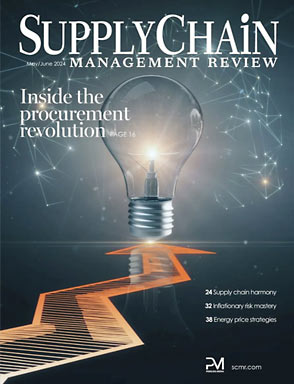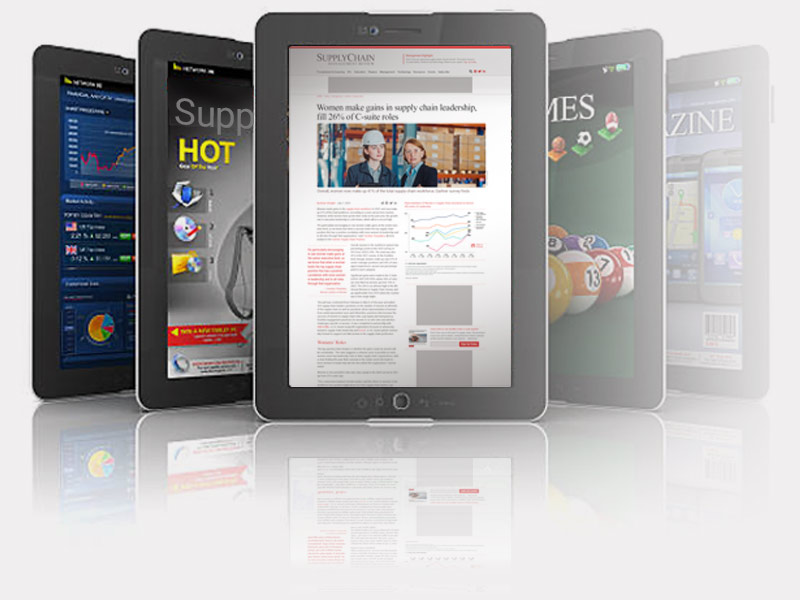Sorry, but your login has failed. Please recheck your login information and resubmit. If your subscription has expired, renew here.
Advances in supply chain 4.0 technologies have triggered visions of managers across the globe driving automation to the next level. Take Richard Liu, the founder of the Chinese retail giant JD.com, who described for Forbes his vision for full automation within his company with “no human beings anymore, 100% operated by AI and robots.” This is what we call a true no-touch supply chain.
Some of this is already happening. Technologies that enable automation of the physical flow of goods are currently being widely piloted, including lights-out factories and warehouses, piece picking robots, automatic guided vehicles, early iterations of self-driving trucks and drone delivery. Similarly, ordering processes are also advancing, quickly moving away from fax and phone to the Internet, EDI, personal assistants/chatbots and IoT—automation degrees of more than 90% are possible even in complex B2B environments.
The benefits of automating physical flows are obvious: 24/7 operations, reductions in lead times and errors, consistent processes and real-time optimization on the fly. Many interesting technologies are also coming together to automate information flows and decisionmaking, including Cloud platforms, robotic processes automation (RPA), negotiation bots and artificial intelligence. Accordingly, the outlook for many blue and white
collar jobs has dimmed significantly, at least according to some analysts who predict a future where robots and robotic process automation will replace a significant percentage of today’s routine, repetitive jobs.

This complete article is available to subscribers only.
Log in now for full access or start your PLUS+ subscription for instant access.
SC
MR
Sorry, but your login has failed. Please recheck your login information and resubmit. If your subscription has expired, renew here.
Advances in supply chain 4.0 technologies have triggered visions of managers across the globe driving automation to the next level. Take Richard Liu, the founder of the Chinese retail giant JD.com, who described for Forbes his vision for full automation within his company with “no human beings anymore, 100% operated by AI and robots.” This is what we call a true no-touch supply chain.
Some of this is already happening. Technologies that enable automation of the physical flow of goods are currently being widely piloted, including lights-out factories and warehouses, piece picking robots, automatic guided vehicles, early iterations of self-driving trucks and drone delivery. Similarly, ordering processes are also advancing, quickly moving away from fax and phone to the Internet, EDI, personal assistants/chatbots and IoT—automation degrees of more than 90% are possible even in complex B2B environments.
The benefits of automating physical flows are obvious: 24/7 operations, reductions in lead times and errors, consistent processes and real-time optimization on the fly. Many interesting technologies are also coming together to automate information flows and decisionmaking, including Cloud platforms, robotic processes automation (RPA), negotiation bots and artificial intelligence. Accordingly, the outlook for many blue and white
collar jobs has dimmed significantly, at least according to some analysts who predict a future where robots and robotic process automation will replace a significant percentage of today's routine, repetitive jobs.
SC
MR


Latest Supply Chain News
- Early bird pricing expires soon for NextGen Supply Chain Conference registration
- A $125M Portland project seeks to revitalize a historic community, U.S. manufacturing
- Innovations in last-mile delivery and their strategic impact
- Embrace resistance for greater success with change management
- 6 Questions With … Steve Johanson
- More News
Latest Resources

 Explore
Explore
Business Management News
- Early bird pricing expires soon for NextGen Supply Chain Conference registration
- A $125M Portland project seeks to revitalize a historic community, U.S. manufacturing
- Innovations in last-mile delivery and their strategic impact
- Embrace resistance for greater success with change management
- Canada Industrial Relations Board orders binding arbitration, halting potential rail strike
- Delivery costs continue to drive shopper preferences
- More Business Management
Latest Business Management Resources

Subscribe

Supply Chain Management Review delivers the best industry content.

Editors’ Picks




